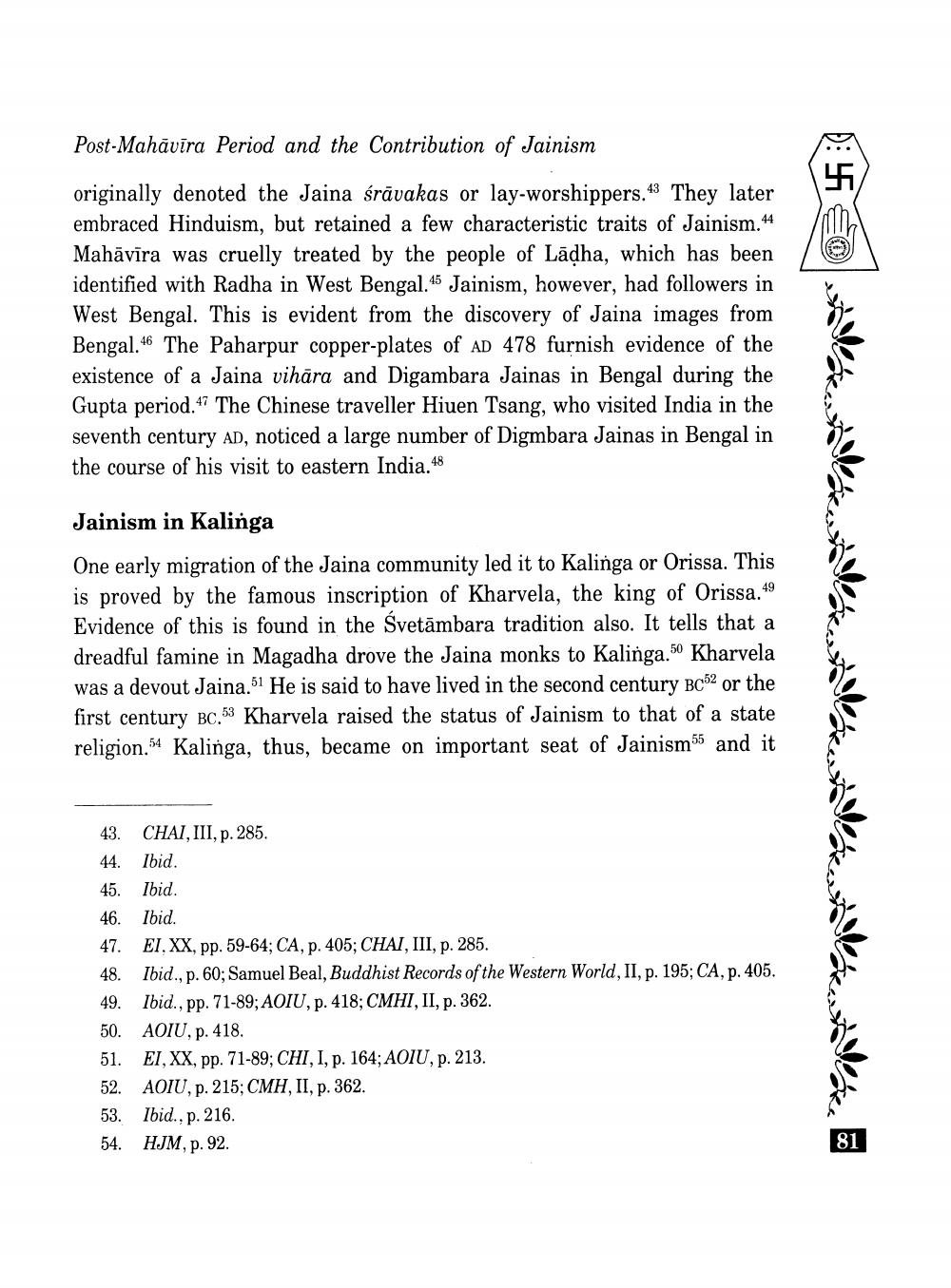________________
Post-Mahāvīra Period and the Contribution of Jainism
originally denoted the Jaina śrāvakas or lay-worshippers.43 They later embraced Hinduism, but retained a few characteristic traits of Jainism.44 Mahāvīra was cruelly treated by the people of Lādha, which has been identified with Radha in West Bengal.45 Jainism, however, had followers in West Bengal. This is evident from the discovery of Jaina images from Bengal.46 The Paharpur copper-plates of AD 478 furnish evidence of the existence of a Jaina vihāra and Digambara Jainas in Bengal during the Gupta period. 47 The Chinese traveller Hiuen Tsang, who visited India in the seventh century AD, noticed a large number of Digmbara Jainas in Bengal in the course of his visit to eastern India.48
Jainism in Kalinga
One early migration of the Jaina community led it to Kalinga or Orissa. This is proved by the famous inscription of Kharvela, the king of Orissa.49 Evidence of this is found in the Svetāmbara tradition also. It tells that a dreadful famine in Magadha drove the Jaina monks to Kalinga.50 Kharvela was a devout Jaina.51 He is said to have lived in the second century BC62 or the first century BC.53 Kharvela raised the status of Jainism to that of a state religion.54 Kalinga, thus, became on important seat of Jainism55 and it
43. CHAI, III, p. 285. 44. Ibid. 45. Ibid. 46. Ibid. 47. EI, XX, pp. 59-64; CA, p. 405; CHAI, III, p. 285. 48. Ibid., p. 60; Samuel Beal, Buddhist Records of the Western World, II, p. 195; CA, p. 405. 49. Ibid., pp. 71-89; AOIU, p. 418; CMHI, II, p. 362. 50. AOIU, p. 418. 51. EI, XX, pp. 71-89; CHI, I, p. 164; AOIU, p. 213. 52. AOIU, p. 215; CMH, II, p. 362. 53. Ibid., p. 216. 54. HJM, p. 92.
81




